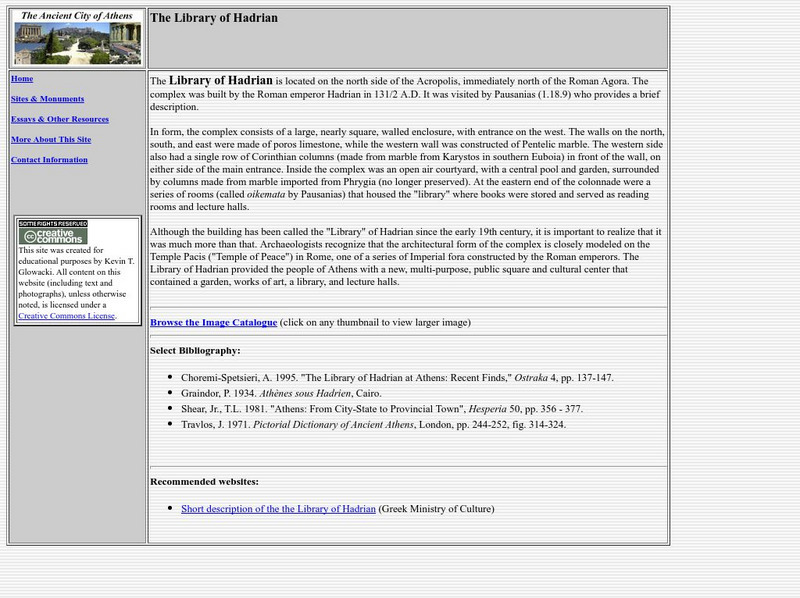The Library of Hadrian is located on the north side of the Acropolis, immediately north of the Roman Agora. The complex was built by the Roman emperor Hadrian in 131/2 A.D. It was visited by Pausanias (1.18.9) who provides a brief description. In form, the complex consists of a large, nearly square, walled enclosure, with entrance on the west. The walls on the north, south, and east were made of poros limestone, while the western wall was constructed of Pentelic marble. The western side also had a single row of Corinthian columns (made from marble from Karystos in southern Euboia) in front of the wall, on either side of the main entrance. Inside the complex was an open air courtyard, with a central pool and garden, surrounded by columns made from marble imported from Phrygia (no longer preserved). At the eastern end of the colonnade were a series of rooms (called oikemata by Pausanias) that housed the "library" where books were stored and served as reading rooms and lecture halls. Although the building has been called the "Library" of Hadrian since the early 19th century, it is important to realize that it was much more than that. Archaeologists recognize that the architectural form of the complex is closely modeled on the Temple Pacis ("Temple of Peace") in Rome, one of a series of Imperial fora constructed by the Roman emperors. The Library of Hadrian provided the people of Athens with a new, multi-purpose, public square and cultural center that contained a garden, works of art, a library, and lecture halls.
Additional Tags
Classroom Considerations
- This resource is only available on an unencrypted HTTP website.It should be fine for general use, but don’t use it to share any personally identifiable information

